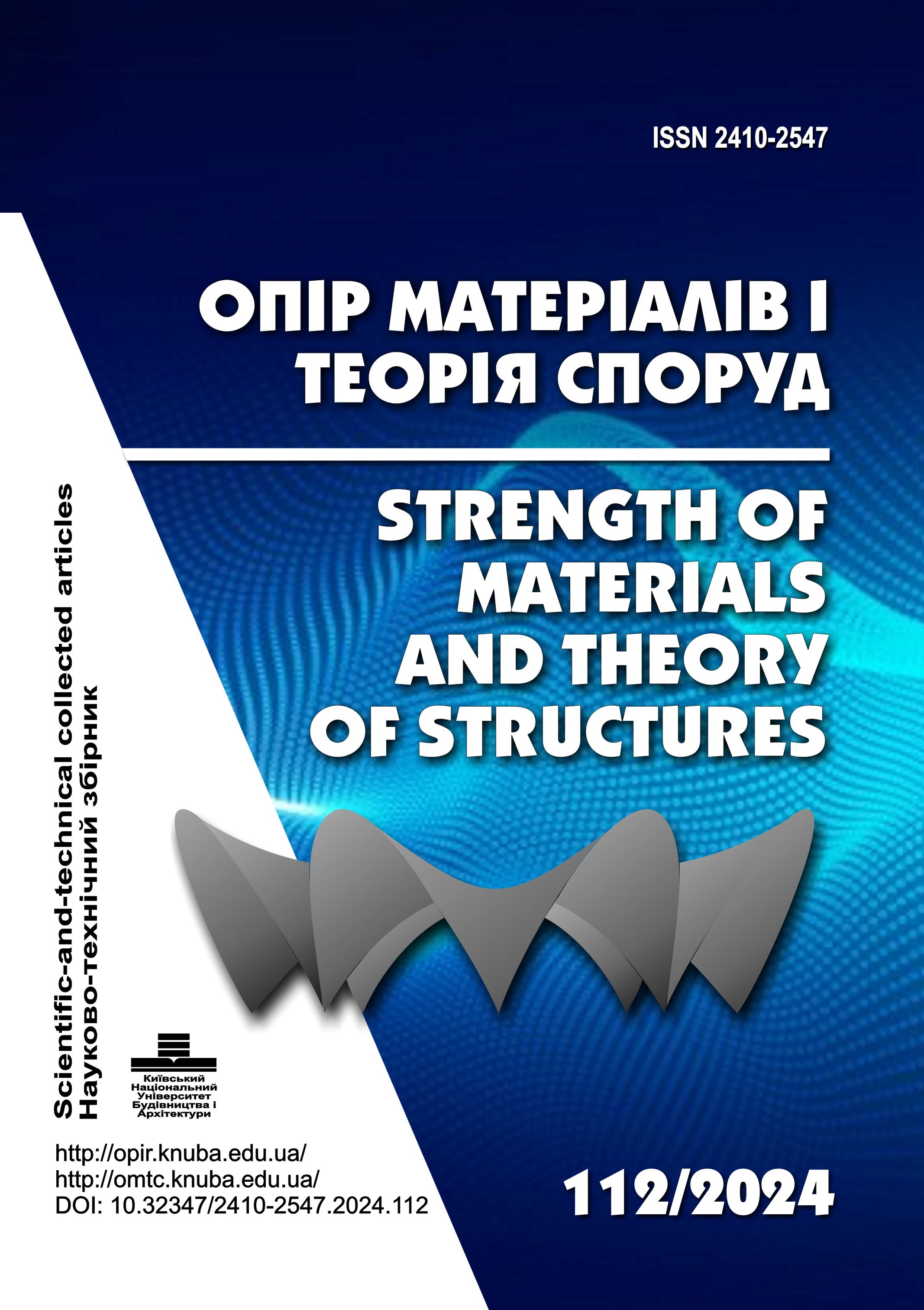Numerical-analytical approach to solving problems of non-stationary thermal conductivity of a non-thin annular plate
DOI:
https://doi.org/10.32347/2410-2547.2024.112.185-194Keywords:
thermal conductivity, convective heat transfer, dimension reduction, modified method of lines, projection method, reduced equations, trigonometric series, basic functionsAbstract
This paper considers the first stage of calculating the initial boundary value problem of non-stationary thermal conductivity of cylindrical bodies using a modified method of lines, namely dimension reduction of the original differential equations, initial and boundary conditions. The original equations of thermal conductivity are defined in a cylindrical coordinate system in a spatial setting. An object is a cylindrical body with commensurate dimensions. This area of research is relevant, because when calculating the load bearing elements of structures to thermal effects, the first step is to determine the distribution of temperature fields. Boundary conditions are considered as conditions of convective heat transfer, which by means of boundary transition are transformed into boundary conditions of the first and second types.
Dimension reduction with respect to spatial coordinate is performed by the Bubnov-Galorkin-Petrov projection method using local basis functions. These functions are called "cover" functions, which are related to the lines drawn on the domain of the task. Normalized trigonometric series are used to reduce the dimensionality of the equations with respect to circular coordinate. All transformations are performed in index form. In addition to differential equations, the projection method reduces the dimensionality of the initial and boundary conditions. In this paper, the most optimal form of writing reduced equations is determined, which provides the ease of reducing the dimensionality of the original differential equations. Initial and boundary conditions take into account the impact of the environment. All this makes it possible to set a reduced initial boundary value problem for further calculation by numerical finite difference methods.
References
Marchuk G. I., Agoshkov V. I. Vvedenie v proekcionno-setochnye metody (Introduction to Projection-Grid Methods). – Moskva: Nauka, 1981. – 416 s.
Burbaki N. Algebraicheskie struktury. Linejnaya i polilinejnaya algebra (Algebraic structures. Linear and multilinear algebra). – Moskva: Gosudarstvennoe izdatel'stvo fiziki-matematicheskoj literatury, 1962. – 516 s.
Koshlyakov N. S., Gliner E. B., Smirnov M. M. Uravneniya v chastnyh proizvodnyh matematicheskoj fiziki (Partial differential equations of mathematical physics). – Moskva: Vysshaya shkola, 1970. – 712 s.
Grinberg G. A. Izbrannye voprosy matematicheskoj teorii elektricheskih i magnitnyh yavlenij (Selected questions of the mathematical theory of electrical and magnetic phenomena). – Moskva: Izdatel'stvo AN SSSR, 1948. – 728 s.
Chybiriakov V. K., Stankevych A. M., Koshevyi O. P. Chyselna realizatsiia modyfikovanoho metodu priamykh (Numerical implementation of the modified method of lines) – Mistobuduvannia ta terytorialne planuvannia. – 2020. – №74. – S. 341–359.
Chybiriakov V. K., Stankevych A. M., Koshevyi O. P. Modyfikovanyi metod priamykh, alhorytm yoho zastosuvannia, mozhlyvosti ta perspektyvy (The modified method of lines, its application algorithm, possibilities and prospects). – Mistobuduvannia ta terytorialne planuvannia. – 2019. – №70. – S. 595–616.
Chybiriakov V. K., Stankevych A. M., Levkivskyi D. V. Dyskretno-kontynualna model dlia rozrakhunku tovstykh plastyn na dynamichni vplyvy (A discrete-continuous model for the calculation of thick plates for dynamic effects). – Mistobuduvannia ta terytorialne planuvannia. – 2014. – №51. – S. 678–687.
Chybiriakov V. K., Stankevych A. M., Melnychuk V. F. Pro odyn alhorytm rozv`iazannia pochatkovo-hranychnykh zadach dlia rivniannia nestatsionarnoi teploprovidnosti (About one algorithm for solving initial-boundary problems for the equation of non-stationary thermal conductivity). – Opir materialiv i teoriia sporud. – 2015. – №95. – S. 90–95.
Levkivskyi D. V., Yansons M. O. Osoblyvosti zastosuvannia metodu linii dlia znyzhennia vymirnosti dyferentsialnykh rivnian teorii pruzhnosti v tsylindrychnii systemi koordynat (Peculiarities of the application of the method of lines for dimensionality reduction of the differential equations of the theory of elasticity in the cylindrical coordinate system). – Mistobuduvannia ta terytorialne planuvannia. – 2018. – №66. – S. 674 – 680.
Levkivskyi D. V., Kaveryn K. O., Sovych Yu. V. Doslidzhennia tochnosti modyfikovanoho metodu priamykh pry rozrakhunku visesymetrychnykh til (Study of the accuracy of the modified method of lines in the calculation of axisymmetric bodies). – Opir materialiv i teoriia sporud. – 2019. – №103. – S. 243 – 252.
Downloads
Published
Issue
Section
License

This work is licensed under a Creative Commons Attribution 4.0 International License.
Authors retain copyright and grant the journal right of first publication with the work simultaneously licensed under a Creative Commons Attribution License that allows others to share the work with an acknowledgement of the work's authorship and initial publication in this journal.

